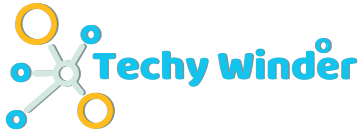For years, Doxfore5 held a reputation as a reliable solution for document management and workflow automation. Businesses across industries used it to streamline tasks, integrate systems, and simplify digital operations. But today, a phrase echoes through tech forums and professional circles that is software doxfore5 dying.
What happened to a platform that once defined productivity for so many organizations? And what does its decline mean for users who still depend on it? To answer these questions, let’s break down the story of Doxfore5’s fall, its ripple effects, and what lies beyond.
What Is Software Doxfore5?
Doxfore5 began as an enterprise-level solution for document handling and workflow organization. Its core strengths were:
- Cross-platform compatibility that made it easy to deploy in different IT environments.
- User-friendly interface compared to clunky legacy systems.
- Integration with enterprise software that made it appealing for businesses looking for efficiency.
At its peak, Doxfore5 was widely praised for simplifying operations. But as technology advanced rapidly, Doxfore5 remained largely static and that’s where its troubles began.
Why Is Software Doxfore5 Dying?
Several interconnected factors explain why software doxfore5 is dying.
Lack of Innovation and Regular Updates
In software, innovation is survival. Users expect frequent updates, new features, and bug fixes that keep pace with modern needs. Doxfore5 failed to deliver in this area. According to Gartner’s software market insights, platforms that don’t adapt quickly to trends like cloud integration and AI automation lose relevance within a few years.
Rising Competition from Agile Players
Cloud-based platforms like Google Workspace, Dropbox Business, and Microsoft SharePoint introduced superior performance, scalability, and collaboration tools. These rivals positioned themselves as SaaS (software-as-a-service) leaders, while Doxfore5 stayed stuck in traditional models. IDC research highlights that SaaS adoption has grown by over 20% annually in enterprise markets, leaving older tools behind.
Weak Customer Support
A key pain point for users was inadequate support. Complaints about delayed responses and lack of clear documentation led to frustration. Forrester studies show that customer support directly affects software loyalty; companies offering 24/7 support retain users 30% longer than those that don’t.
Changing User Demands
Today’s businesses demand:
- Mobile access
- Real-time collaboration
- Strong security compliance
- AI-powered automation
Because Doxfore5 didn’t evolve to meet these expectations, its value diminished rapidly.
Impact of Software Doxfore5 Dying
The decline doesn’t just affect the company behind the product; it ripples through users, industries, and the broader market.
On Businesses
- Financial strain from migrating to new platforms.
- Disrupted workflows while staff adapt to unfamiliar tools.
- Security risks due to lack of patches or compliance updates.
On Users
- Declining trust as bugs pile up.
- Daily frustrations that reduce productivity.
- Anxiety about transitioning to alternatives.
On the Market
- Opportunities for emerging SaaS players.
- Acceleration of the shift toward cloud-first solutions.
- A reminder that legacy systems cannot survive without evolution.
The Harvard Business Review notes that companies tied to outdated systems are more likely to face compliance fines, cyber risks, and competitive disadvantages compared to those who adapt quickly.
Alternatives to Doxfore5
The good news: the collapse of Doxfore5 coincides with a boom in modern document-management tools.
- Google Workspace – cloud-native, seamless collaboration.
- Microsoft SharePoint & OneDrive – enterprise-grade, highly customizable.
- Zoho Docs – affordable with AI-enhanced productivity.
- Dropbox Business – user-friendly, strong cloud storage integration.
- Industry-specific tools – healthcare, legal, and finance solutions designed with compliance in mind.
What Users Can Do Now
If you still rely on Doxfore5, here’s a roadmap for transition:
- Audit current workflows – identify what Doxfore5 handles and what features are critical.
- Back up all data securely before migration.
- Test alternatives with free trials to compare usability and integration.
- Plan migration timelines to reduce downtime.
- Train employees to adapt quickly to new systems.
This proactive approach minimizes disruption and ensures that the shift to modern platforms is smooth.
Lessons from the Decline of Doxfore5
The story of software doxfore5 dying carries valuable lessons for developers and businesses:
- Innovation is mandatory. Products that stop evolving fade quickly.
- Customer support is non-negotiable. Users expect quick, reliable help.
- User trust is fragile. Once broken, it’s nearly impossible to repair.
- Adaptation is survival. Both companies and users must embrace change to stay competitive.
The Future Beyond Software Doxfore5
While the death of Doxfore5 feels like the end of an era, it also represents a turning point. The next generation of document-management tools emphasizes:
- Cloud-native operations for global access.
- AI-driven automation that reduces manual tasks.
- Enhanced security frameworks aligned with industry compliance.
- User-centric design that reduces training time.
Quick Takeaway Box
- Software doxfore5 dying due to lack of updates, competition, and poor support.
- Businesses must transition early to avoid disruptions.
- Modern alternatives offer better cloud, AI, and security features.
- The decline is a reminder of how fast technology evolves.
Conclusion
The decline of Doxfore5 highlights a universal truth in technology: no tool lasts forever. While its fall creates challenges, it also pushes organizations toward innovation, stronger security, and more efficient platforms.
So, can users still cling to Doxfore5? Temporarily, yes, but it’s a risky choice. The smarter move is to plan for migration, embrace modern tools, and view this as an opportunity rather than a setback.
In the end, software doxfore5 dying is not just the story of one platform, it’s a reminder that adaptability defines success in today’s digital world.




